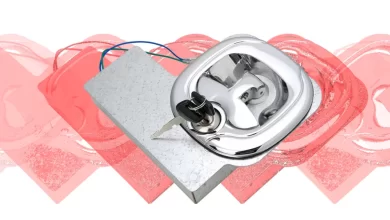Franklin Templeton Runs 30 Validator Nodes Across 12 Blockchains

Franklin Templeton, who pioneered tokenization with a $1.6 trillion asset base, operates 30 validator nodes across 12 blockchains.
TakeAway Points:
- Franklin Templeton, who oversees $1.6 trillion, is using blockchain technology to run 30 validator nodes across 12 blockchains in order to save costs and increase efficiency.
- Using Stellar, the company launched the first on-chain money market fund in 2021, leading the way in tokenization compared to rivals like BlackRock.
- Franklin Templeton views exchange-traded funds (ETFs) as a safe and secure means for investors to obtain exposure to the cryptocurrency market. The firm has been approved to list spot-based Bitcoin ETFs in the United States.
Integration of Blockchain by Franklin Templeton
A leading player in digital asset management, Franklin Templeton, is managing $1.6 trillion in assets. At a panel discussion at Consensus 2024 in Austin, president and CEO Jenny Johnson stressed the revolutionary potential of blockchain technology.
“We have looked at blockchain technology [and found] this is going to be transformational and we better make sure we understand it,” Johnson stated.
About thirty validator nodes are presently in operation for the company across twelve distinct blockchains, including Ethereum (ETH), Cardano (ADA), Stellar (XLM), and Provenance. This goes beyond what their website, which includes six networks, including Polkadot (DOT) and Solana (SOL), suggests.
Johnson emphasised how blockchain technology may be efficient and cost-effective.
“Franklin [Templeton] today has a huge number of people, a couple hundred, who just reconcile [data] between systems, then we have to reconcile with our counterparty and another firm,” she explained.
Blockchain promises improved transaction timeliness and a single “source of truth,” which could drastically save expenses and workload associated with administration. The company has led the way in tokenization; in 2021, it launched the first money market fund that was accessible on-chain through the Stellar network, far ahead of rivals like BlackRock.
The Growth of Crypto at Goldman Sachs
Goldman Sachs’ global head of digital assets, Mathew McDermott, claims that the company is expanding its presence in the cryptocurrency space. In 2021, McDermott, a 19-year Goldman employee, established the company’s digital asset desk.
Since then, he has led the launch of numerous cryptocurrency-related goods and services, such as liquidity for trading futures, options, and cash-settled derivatives. During his speech at Consensus 2024, McDermott emphasised the bitcoin ETF’s performance, referring to it as a “major psychological turning point” for the sector. This success has drawn additional institutional players in addition to reigniting interest in retail trading.
Ethereum Exchange-Traded Funds and Potential Markets
The U.S. Securities and Exchange Commission (SEC) has just approved applications to list ETH ETFs on exchanges including Cboe, NYSE Arca, and Nasdaq.
Still, the SEC’s approval of S-1 filings from issuers such as Ark Invest, Bitwise, BlackRock, Fidelity, and Grayscale might take months. “This is a natural development that ETH will hopefully be approved to be a fully trading ETF,” McDermott said, expressing optimism about ETH’s approval as a fully tradable ETF. Additionally, he mentioned that because of their CME-tradable futures, Goldman’s clients are mostly focused on Ethereum and bitcoin. Although he believes it is too soon to draw firm conclusions, he sees potential in other cryptocurrencies, such as Solana (SOL).
Trend of Tokenisation
While it has not yet embraced open blockchains, Goldman Sachs was one of the first companies to use tokenization. McDermott clarified that the company has been using private, permissioned chains since 2021, but this is not because of a strong ideological position, but rather because of the ambiguous regulatory landscape.
In his statement, “For us, seeing what our clients want to accomplish then becomes ‘how can you assist our clients,’” he underlined the significance of attending to the demands of the client. Tokenization, in McDermott’s opinion, is a developing trend that, by drawing in more investors, can increase liquidity and operational efficiency. He emphasised how tokenization may be used to fractionalize assets, expanding the channel of distribution and bringing secondary liquidity under one roof.





